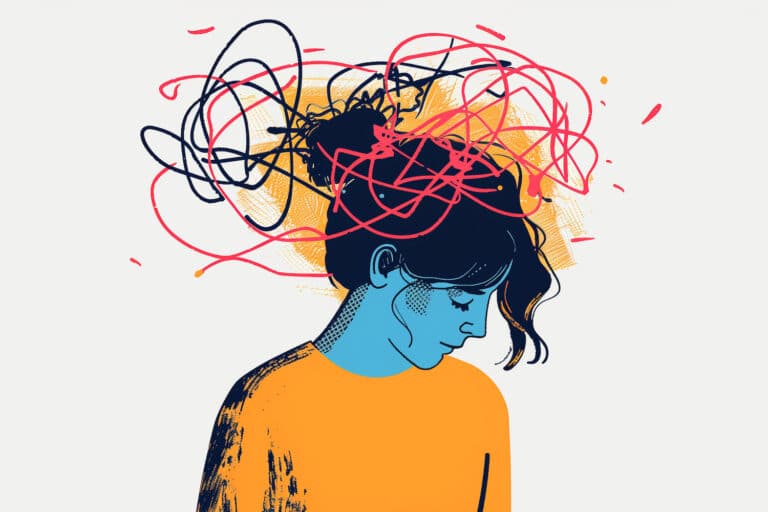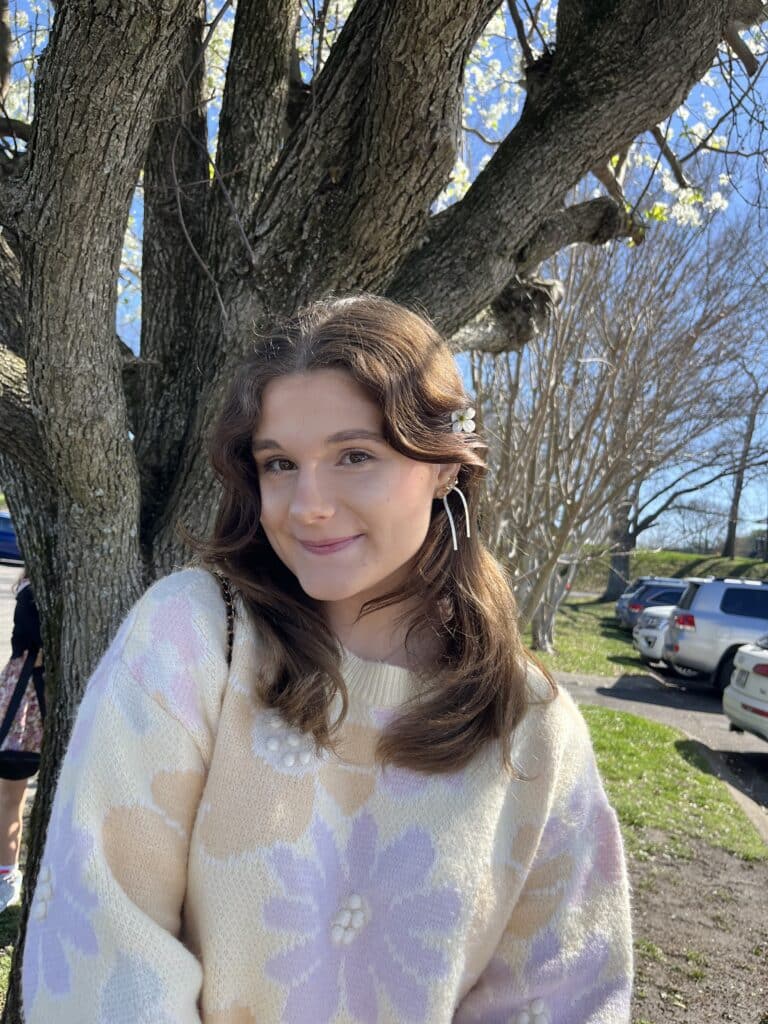For many of us, social media platforms like YouTube, TikTok, and Instagram are a part of our everyday lives. They help us stay in touch with friends and often allow us to engage with people we rarely see in person. They can also provide us with entertainment and virtual communities of people who share our interests. However, not everything about social media is positive.
We may swipe through hundreds or even thousands of images a day when consuming social media, and — whether in a good or bad way — this can influence how we feel about ourselves and our bodies. Increasingly, there is an excess of harmful content and toxic attitudes on social media — especially when it comes to physical appearance. Research tells us that social media use not only triggers body image concerns but can also lead to (or heighten) eating disorder symptoms.
What are the links between social media and its negative effect on body image? Who is likely to be affected by this type of toxic content? What unhealthy eating behaviors can it contribute to? And finally, how can we best cope with the adverse effects of social media?
How Social Media Affects Body Image
Body image refers to how we view and feel about our bodies daily. It is influenced by our experiences, personality, emotions, and environment.1 Many images on social media are digitally edited or filtered, showing users unrealistic and unattainable beauty ideals. These standards are harmful to our psychological health and well-being. The unhealthy comparisons of oneself to altered, unrealistic images result in a decrease in self-esteem and increased dissatisfaction with one’s body, leading to poor body image.
Signs of negative body image ideation
Some signs that you or a loved one may be experiencing body dissatisfaction are:1
- Repetitive dieting behavior (fasting, counting calories, skipping meals)
- Compulsive exercise patterns
- “Checking” behaviors (checking appearance in reflection, measuring body parts, pinching skin)
- Spending an excessive amount of time on appearance, hair, make-up, or wardrobe
- Body shaming
- Social comparison
- Body dysmorphia
- Avoiding situations where body image may cause anxiety (swimming, socializing)
This constant negative and harsh judgment of our bodies can contribute to disordered eating thought patterns and behaviors like restricting and purging. In more severe cases, it can lead to dangerous eating disorders such as anorexia and bulimia.2 In essence, the link between social media and eating disorders has become a global public health issue.3
Body image issues in children and adolescents
The influence of social media on youth is significant. On average, children and adolescents clock six to eight hours per day of screen time — most of which is spent on social media.4 Although the minimum age to open a social account is 13, up to 42% of children under 13 have profiles.5
Studies show more than 51% of teens in the US spend at least 4 hours a day on social media. Across age groups, the average time per day spent on social media ranges from 4 hours daily for 13-year-olds to nearly 6 hours for 17-year-olds. Girls were reported to spend about an hour more per day on social media than boys.6
Childhood and adolescence are periods of development in which individuals are highly vulnerable. Young people are shaped by their experiences and their environment. They take the things they see and hear to heart — without the wisdom and critical eye that adults have. It can be very damaging when a child misinterprets and internalizes messages about their body or appearance.
The Role of Social Media in Unhealthy Eating Behaviors
Photos and images found on social platforms can have a profoundly negative impact on body image, leading us to believe there is a specific body size and shape that is acceptable or preferred. The wave of social media trends that unintentionally promote unhealthy fitness and disordered eating behaviors contributing to poor body image include:
Thigh gaps
Introduced in the early aughts, the “thigh gap” trend — a one to two-inch gap between the thighs when the feet are touching together — swept across social media platforms like wildfire. The phenomena raised concerns among eating disorder experts, as it is almost impossible to attain.7
Legging legs
Similarly, in 2024, thigh gaps resurfaced under another name known as “legging legs.” Essentially, it projects that a “thigh gap” is required to look good in leggings.
“Thinspo” or “thinspiration”
Combining the words “thin” and “inspiration” coins the term referring to any kind of content that encourages an unhealthy body image or disordered eating. While the posts may not have malicious intent, they are designed to capitalize on feelings of self-doubt and dissatisfaction. The danger in this type of content is that it frequently masquerades as self-help health and nutrition advice.8
Cyberbullying
A recent study indicates that 59% of US teens have personally experienced cyberbullying, as it runs rampant on social media.2 It includes offensive name-calling, the spreading of false rumors, and other types of bullying that attack individuals for their body size, shape, or appearance.
Laxative use
Laxatives are being promoted on TikTok as a cheaper alternative to popular weight loss drugs. Claims are made that laxatives will help you lose weight and reduce bloating. However, research finds no evidence that laxatives cause sustained weight loss. Experts are concerned that this type of laxative misinformation could lead to disordered eating.2
Not only do these types of trends expose users of all ages to the how-to of engaging in eating disorder behaviors, but when users consume damaging content, platform algorithms add similar content to their feeds. One study found that 40% of Instagram users had increasingly poor body image after they started using the app.5 Another study shows that Instagram use focused on healthy eating is linked to more symptoms of orthorexia nervosa, an obsession with healthy eating.9 Overall, there is evidence from 50 studies across the globe that social media use leads to poor mental health, body image concerns, and eating disorders.5
Coping With the Negative Effects of Social Media
There are ways to protect yourself or your loved one from social media’s negative impacts. For every negative message about body image, there is a positive one. It is crucial to improve media literacy by knowing how to navigate social media and its content.
- Control your content consumption. Follow body-positive influencers and unfollow accounts that are damaging to body image and self-esteem.
- Set limits. Limit the time you spend on social media and stick to the boundaries you’ve set.
- Turn off notifications. Minimize the distractions and frequent interruptions of the social apps.
- Stay out of the comments. Negative comments, body shaming, and bullying make their way into every post. Steer clear of comments to avoid the negativity found there.
- Take a temporary break. Research shows that adolescents and young adults who limit their social media use for a few weeks feel significantly better about their bodies and appearance afterward.4
- Be kind to yourself. The way you treat yourself impacts your self-esteem and body image. Use positive self-talk and avoid negative self-talk.8
Social Media Use and Eating Disorder Recovery
You may feel vulnerable and emotional, and protecting yourself from negative influences is essential during this challenging process. Exposure to content emphasizing dieting, thinness, and unrealistic beauty standards can threaten progress. Reducing social media screen time during recovery is essential to improve self-esteem and body image.
Find Hope at Magnolia Creek
Eating disorders do not go away on their own. Seeking treatment from healthcare professionals who specialize in eating disorders will give you the best chance of lasting recovery. Often, it is necessary to have the ongoing support and guidance of a treatment team — including a psychiatrist, therapist, and dietitian — to overcome struggles with an eating disorder. Additionally, different levels of treatment may be necessary, depending on the severity of the eating disorder or the rate at which it is escalating.
At Magnolia Creek, our team of eating disorder specialists provides effective therapies tailored to your unique needs, regardless of where you are in your eating disorder journey. If you or your loved one is struggling with an eating disorder, call us or fill out our contact form today and find out how the caring team at Magnolia Creek can help.
References
- National Eating Disorders Collaboration. (n.d.). Body image. Retrieved March 20, 2024.
- Pedersen, T. (2023, February 27). How does social media affect body image? PsychCentral.
- Dane, A., & Bhatia, K. (2023). The Social Media diet: a Scoping Review to Investigate the Association between Social media, Body Image and Eating Disorders Amongst Young People. PLOS Global Public Health, 3(3).
- American Psychological Association. (2023, February 23). Reducing social media use significantly improves body image in teens, young adults.
- Dane, A, & Bhatia, K. (2023). The social media diet: A scoping review to investigate the association between social media, body image and eating disorders amongst young people. PLOS Global Public Health, 3(3).
- Rothwell, J. (2023, October 13). Teens Spend Average of 4.8 Hours on Social Media Per Day. Gallup.com.
- The “thigh gap:” A skinny rule reigning social media sites frequented by teenage girls – Orlando Health Arnold Palmer Hospital for Children. (2024). Arnoldpalmerhospital.com.
- What Is Thinspo and Why Is It Dangerous? (2024, March 29). Cleveland Clinic.
- Turner, P. G., & Lefevre, C. E. (2017). Instagram use is linked to increased symptoms of orthorexia nervosa. Eat Weight Disord, (2), 277-284.
- King University Online. (2019, October 9). The link between social media and body image.




